By Debra K. Brinker, RN
There is an intricate interplay between the various structures of a joint, where injury to one area affects other areas of the joint. When a supporting structure, such as a ligament, becomes injured, the cycle of joint instability begins. This initial injury can cause wear and tear to other areas, furthering instability, until the joint degenerates into the condition we know as degenerative osteoarthritis.
The easiest way to understand joint instability is to think about a pair of cabinet doors. If the doors are hitting, they do so because a hinge is loose. Any loose hinge starts with one screw becoming loose and putting added pressure on the other screws in the hinge until the entire hinge is loose. To remedy this, a screwdriver is used to tighten the screws and allow the doors to glide properly again. Just as a screw stabilizes a hinge, the ligaments stabilize our joints. (See Figure 1.) Ligaments connect bone to bone and allow for smooth joint movement.
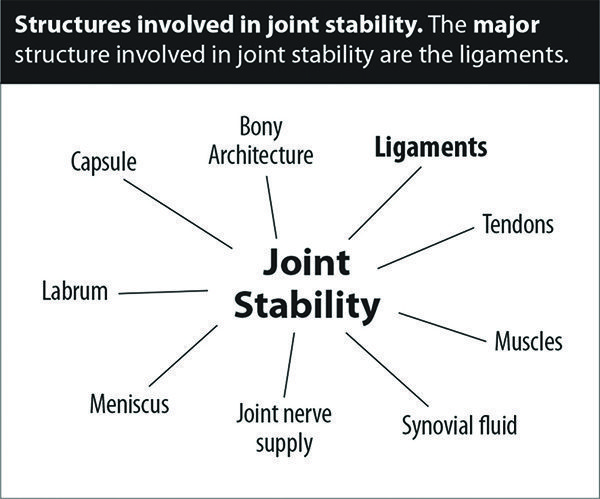
Let’s examine how a common knee injury, an anterior cruciate ligament (ACL) tear, fits the hinge analogy. ACL injuries cause the tibia and fibula bones to move too much. This is known as knee joint instability. As the bones move and twist beyond normal with each step, other ligaments are affected. When additional stress is placed on the knee, such as with running, even more force is added to the wobbly knee structure, eventually damaging the tendons, meniscus and cartilage. The abnormal wear and tear causes cartilage breakdown, eventually resulting in degenerative osteoarthritis. By comparison, continued use of a door on a loose hinge leads to added pressure and loosening of other screws, causing the door to wobble further and eventually hit the adjacent door. To quickly remedy this, a screwdriver can be used to tighten the screws and stabilize the door. In the human body, the treatment to stabilize joints is Prolotherapy. This Regenerative Injection Treatment causes a repair of the ligaments so the bones glide properly, without hitting one another and wearing down the joint. (See Figure 2.)
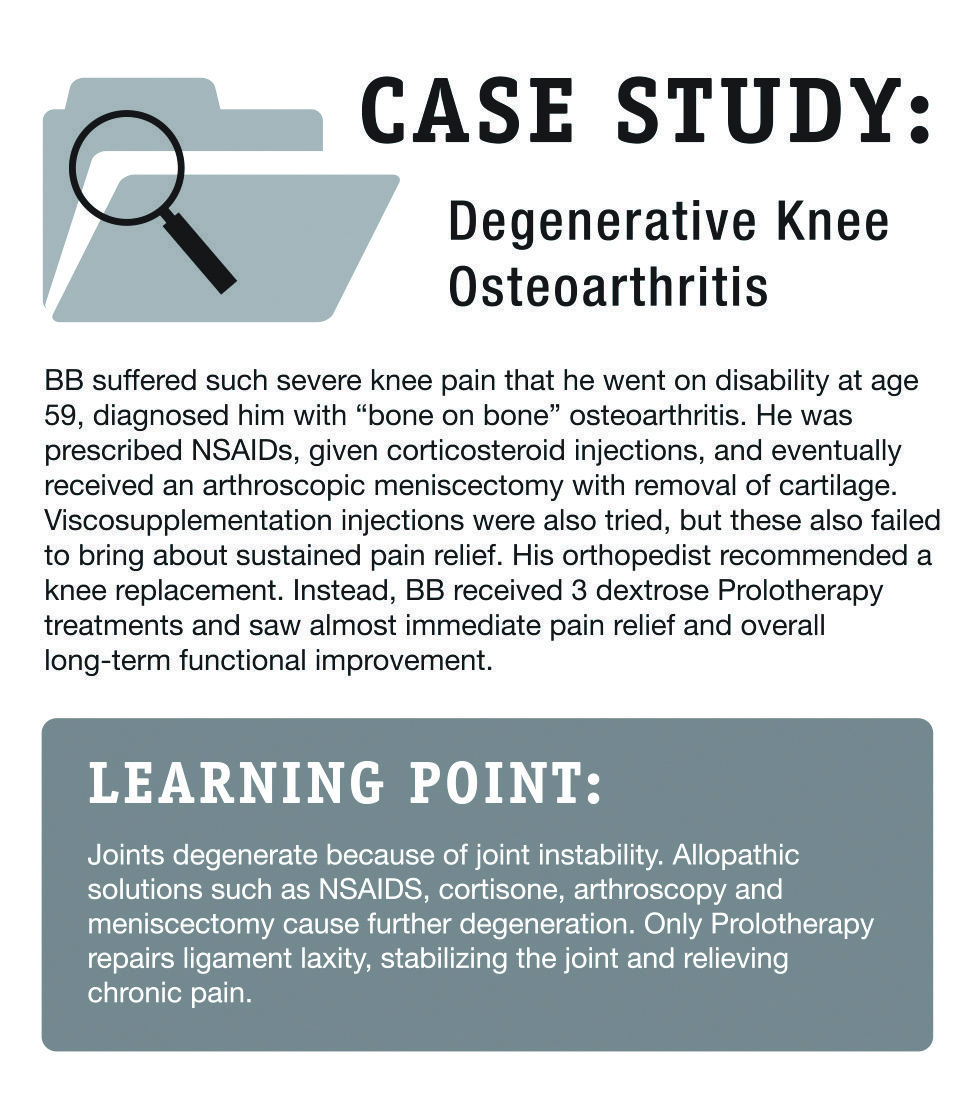
Prolotherapy compared to other treatments
Viscosupplementation (hyaluronic acid) and cortisone injections are common approaches for treating joint pain. Unfortunately, they are only known for short term effectiveness because the underlying cause of the pain is not addressed by these treatments. They could be compared to using oil to lubricate a hinge. It does not secure the hinge, allowing the cabinet door to continue hitting the adjacent door. Arthroscopic surgery to shave cartilage or remove labral or meniscus tissue, in the cabinet analogy, is comparable to shaving the cabinet door at the point of contact with the adjacent door, or replacing the door altogether. These options range from nonsensical to extreme when a simple screwdriver is what’s needed to repair the hinge and straighten the door. (See Figure 3.)
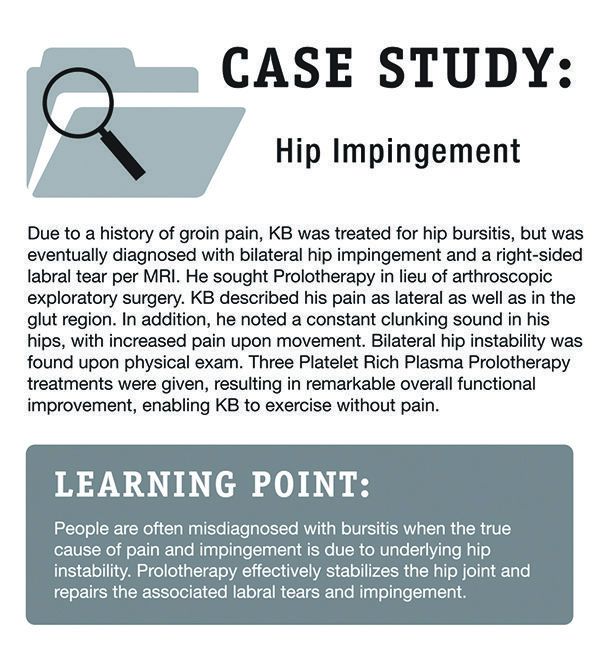
Sports injuries
When it comes to sports injuries, underlying joint instability from ligament laxity must also be considered. However, the focus is frequently placed on the muscles for pain relief, which is why physical therapy is often the first step. While muscle-focused work in physical therapy and massage can be of great benefit, if the person still feels joint popping, grinding, or weakness, ligament laxity may be the missing diagnosis. This is commonly seen in cases of chronic muscle spasms and tightness where the muscles are being overused to stabilize joint movement, instead of allowing the ligaments to do this job. (See Figure 4.)
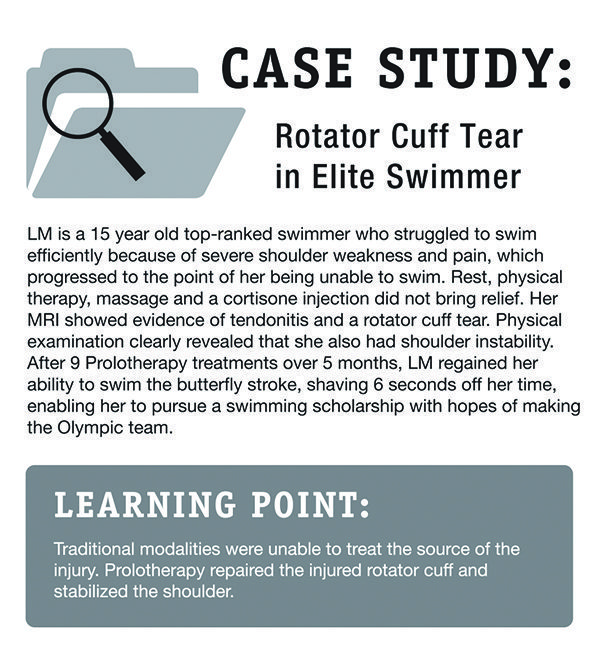
People who have tried physical therapy, massage, chiropractic, acupuncture or even surgery, but still have returning pain, may find the true culprit is joint instability from ligament laxity. Because ligaments have a poor blood supply, they tend to heal poorly on their own after the initial healing phase post-injury. The body, therefore, develops other ways to try and stabilize the joint: recruiting muscles, swelling the joint, and overgrowing bone. (See Figure 5.) However, there is a way to restart the healing cascade for ligaments by using Prolotherapy. This non-surgical treatment acts like a screwdriver does to tighten the screw on a loose hinge, allowing a cabinet door to glide properly once again.
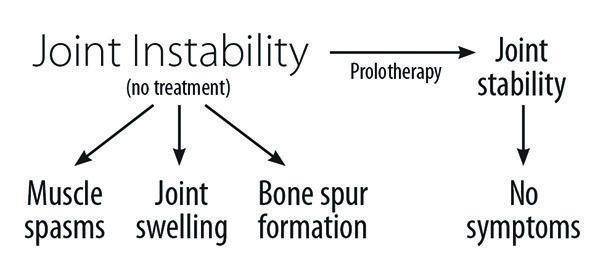
Prolotherapy Specialists
CaringMedical.com
239-303-4546
with locations in Fort Myers and Chicagoland







